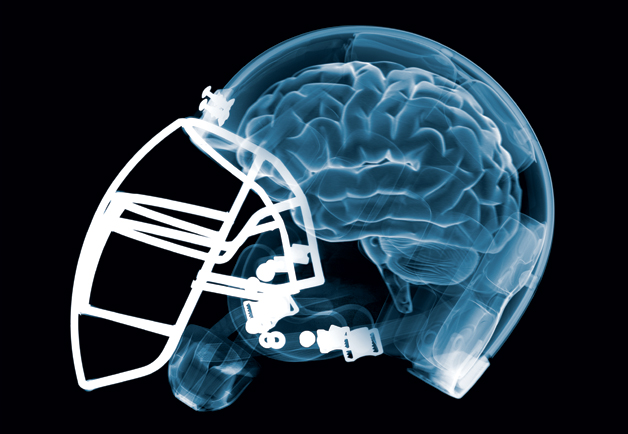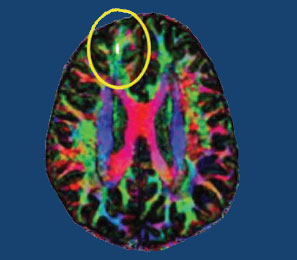Topic: COMMUNITY INTEREST

TRAUMATIC BRAIN INJURY
KEEPING YOUR KIDS SAFE
BY TAMMY DUFFY

According to CDC, 1.7 million traumatic brain injuries (TBI) occur every year in the US. This equates to an annual cost of $24 Billion to the United States for TBI. The World Health Organization has labeled TBI as a public health issue.
The condition, especially if moderate to severe, requires highly specialized, multidisciplinary care. In 2012, a National Research Action Plan was developed to “share information, brainstorm innovations, and accelerate science” among academia, industry, and government institutions. On August 31, 2012, President Obama issued an Executive Order directing the Departments of Defense (DoD), Veterans Affairs (VA), Health and Human Services (HHS), and Education, to develop a National Research Action Plan (NRAP) on posttraumatic stress disorder (PTSD), other mental health conditions, and Traumatic Brain Injury (TBI) “to improve the coordination of agency research into these conditions and reduce the number of affected men and women through better prevention, diagnosis, and treatment.” Section 5 of the Order highlights how a limited understanding of underlying mechanisms of PTSD, the long-term consequences of TBI, and warning signs for tragic outcomes such as suicide is hampering progress in prevention, diagnosis, and treatment. Therefore, the NRAP includes research strategies to accelerate discovery of underlying mechanisms and rapidly translate this understanding into actionable tools for prevention, early diagnosis, and better treatment. The Order also calls for the establishment of a comprehensive longitudinal study of 100,000 service members focused on PTSD, TBI, and related injuries. To attain these goals, the Order urged research agencies to improve data sharing as appropriate and with appropriate privacy and confidentiality protections, and harness new tools and technologies (e.g., electronic health records). Importantly, the Order directs the NRAP to improve coordination between agencies and ultimately reduce the number of affected individuals.
This is in line with the national BRAIN (Brain Research Through Advancing Neurotechnologies) initiative, which formed a commission to address the ethical and legal implications of the rapid advances in neuroscience. Since late 1990s to early 2000s, neuroethics and neurolaw disciplines have emerged, striving to address the ethical and legal problems particular to individuals with brain injuries, brain anomalies and neuropsychiatric problems.
TBI in this sense is a model clinical entity, as sophisticated research evidence points to alteration of brain structure. In terms of TBI care, the forefront calls for enhancing interdisciplinary communication and collaboration. It was clear from all the presenters today there is a large unmet need as it pertains to the management, there is a lot of guess work done in the evaluation and treatment of TBI. How would you feel if someone said to you," You have cancer, slightly." But we say this all the time to people when it comes to concussions. They are told," You only have a "slight concussion."
In Philadelphia and nationwide, multidisciplinary conferences and small group retreats addressing scientists, physicians, allied healthcare disciplines, patients and patient families and legal practitioners happen regularly. However, each discipline approaches TBI within their own paradigm which can be a natural communication barrier between disciplines. The best success in treating TBI is breaking down these barriers.

In order for this all to succeed and to share information, brainstorm innovations, and accelerate science on TBI, there needs to be a database/registry developed nationwide to meet the needs of physicians, scientists and academicians from different disciplines converging on TBI. Taking cost out of healthcare is a huge focus in the USA. This is a $24 Billion/yearly issue, TBI. By optimizing how the data is managed you are not only optimizing data collection and analysis. But, you would change outcomes for the patients with TBI. There is currently so much guess work done by physicians as it pertains to the treatment, diagnosis and long term care of TBI patients.
Some other important statistics include:
Psychiatric disorders are 2.8 times higher with TBI than without TBI
There is a 21% suicide rate with TBI (at all severities)
There are no drugs approved by the FDA for PTSD
Combat TBI doubles the chance for PTSD
There has been a lot of research and development in the arean of "concussion proof" helmets. All of the current products out there, even those testes by the Univ of VA will not keep you from getting a concussion. They also do an extremely poor job of accurately measuring the impact to the head. While the Virginia Tech ratings provide parents with valuable biomechanical data intended to help them make educated decisions about which helmet to purchase, parents and athletes need to be aware that the ratings come with a number of significant limitations.
The ratings are currently only based on linear acceleration: Because the 2014 STAR values are based solely on linear (i.e. straight-line) acceleration and do not reflect rotational (i.e. twisting) acceleration, Virginia Tech's rating methodology continues to be heavily criticized,by the National Operating Committee on Standards for Athletic Equipment (NOCSAE).

A concussion in football is a very complex event involving different and changing forces, linear and rotational accelerations, helmet fit, player position, impact duration, player concussion history and overall health, and potentially even genetics. The Virginia Tech Helmet Ratings system approaches the very broad and complex issue of concussion protection from a narrow vantage point of linear accelerations only and does not address other biomechanical variables such as rotational accelerations, particularly where rotational accelerations precede the linear acceleration in a hit. There is also zero proven medical research out there that validates when an athlete or person can return to sports after a concussion. ZERO! If you get a concussion there is not a coach on this earth that can tell you," Yes, you are safe to go back out on the field." If they do, they are setting themselves up for a lawsuit that they will lose. TBI does not just happen to athletes. It can happen to anyone who injures their head in some way. TBI from car accidents have siginificantly decreased over the years due to the fact that car manufacturers have optimized vehicle designs as it pertains to head injuries. This however is not the case in athletic related injuries. These are significantly on the rise. They are starting earlier in a childs life due to the fact their parents are enrolling them in hockey, soccer and football leagues at very young ages. They and the coaching staff (which in most cases for smaller children are just other parents) are not adequately trained in TBI related safety.
Parents and athletes need to be aware of these limitations and lack of scientific studies on "returning to the field time", and the current helmets and sensor technologies being utilized. Be aware of recommendations by those not in the know. Ask questions before you let your kids loose on the field. They only get one brain.
* The remarks made in this article were gathered from physcians in the USA who are considered the leaders in TBI research.
Posted by tammyduffy
at 6:26 PM EDT
